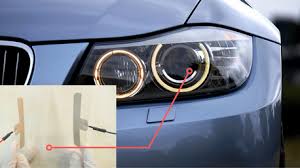Optically clear heaters are becoming essential in industries where stable visibility matters. Fog, frost, and moisture can block cameras, blur displays, and slow operations. Many teams search for a dependable way to keep their optical surfaces clear. That is why optically clear heaters are quietly shaping the future of visual systems. They bring stable heating, fast clarity recovery, and good optical transmission—all without blocking the view.
Whether you work with cameras, lenses, sensors, or display panels, this guide will help you understand how these heaters work and how to select the right solution.
Optically clear heaters also called transparent heater, they are thin, transparent heating layers that deliver uniform warmth across a surface without affecting visibility. They use conductive materials such as ITO (Indium Tin Oxide), metal mesh, or silver nanowire to create a clear heating film. When electricity flows through the conductive layer, it produces a clean heating effect. The film stays thin, light, and nearly invisible.
These heaters are widely used in projects where both heat and clarity are required. You may see them in vehicle cameras, industrial inspection lenses, medical sensors, outdoor displays, and safety windows. Many customers searching for optically clear heaters element, optically clear heaters solutions, or ITO optically clear heaters want a stable defog or defrost method that does not block the view.

Fog forms when warm, moist air touches a cold surface. Tiny water droplets build up and scatter light. This blocks images and reduces clarity. Frost appears when the moisture freezes. Both issues happen often during:
Even a sealed camera or display can “breathe” slightly when the temperature changes fast. This small shift pulls moisture into the optical structure, leading to fog or frost. Clear vision becomes hard to maintain unless the surface is gently warmed.
The function is simple but effective. The heater uses a transparent conductive layer, such as ITO optically clear heaters, bonded to a glass or plastic substrate. When voltage is applied, the conductive layer creates heat. This heat spreads across the entire viewing area. The surface temperature rises just enough to stop moisture condensation.
Typical technical features:
The result is a stable, fog-free surface without the bulk of traditional heaters.

Optically clear heaters offer several strong benefits that make them attractive to optical system designers:
Demand for optically clear heaters market is rising, especially in fields where camera failure or visibility loss can affect safety or performance. Common applications include:
Each field values clear vision and strong reliability, making optical heaters a natural fit.
| Category | ITO Optically Clear Heaters | Silicone Rubber Heaters |
| Transparency | High optical clarity (85–92% transmission). Suitable for cameras, displays, and optical windows. | Opaque. Not suitable for any application requiring visibility through the heater. |
| Thickness | Very thin (0.05–0.2 mm). Ideal for compact optical modules. | Thicker (0.5–2 mm). Designed for robustness and insulation. |
| Heating Uniformity | Excellent uniformity across the full optical area. | Strong heating but less uniform due to wire/foil distribution. |
| Power Density | Lower watt density for gentle surface heating. | Supports higher watt density for fast, high-heat tasks. |
| Temperature Range | Moderate heating levels suited for defog/defrost. | Handles high temperatures (up to 200–250°C continuous). |
| Flexibility | Flexible films suitable for flat or slightly curved surfaces. | Highly flexible and durable for complex surfaces. |
| Optical Use Cases | Automotive cameras, industrial cameras, displays, optical sensors, transparent windows. | Battery heaters, industrial equipment, pipes, tanks, medical devices. |
| Environmental Durability | Good stability but needs careful handling during assembly. | Very durable. Tolerates moisture, vibration, chemicals, and high heat. |
| Installation Method | Typically bonded with OCA/LOCA or optical layer. | Fixed with adhesive backing, clamps, or mechanical fasteners. |
| Cost | Higher due to thin-film deposition and optical-grade bonding. | Lower cost. Simpler layer structure and mass production. |
Choosing the correct heater depends on clear project goals. Consider:
A good design balances clarity, response time, and safe heat levels for long use.
Modern optical systems often need custom heater shapes. You can customize:
These options help the heater follow complex surface shapes and deliver even heating.

Many customers come with specific pain points, such as:
“Our automotive cameras fog after overnight parking.”
A thin ITO heater prevents fog at start-up.
“Our machine vision camera loses clarity during humidity changes.”
Transparent heating maintains stable vision inside factories.
“Our display fogs in cold storage areas.”
Clear heaters warm the display glass just enough to stop condensation.
“Traditional heaters block the view.”
Optically clear heaters keep the viewing area fully transparent.
“We need low energy usage.”
ITO heaters operate at gentle watt density with stable heat output.
Danyu Electronics supports companies building advanced optical systems. Our team focuses on transparent heating technologies that combine clarity, fast thermal response, and strong reliability.
What Danyu Offers:
We help customers move from concept to mass production with smooth communication and stable quality.
If you need fast sampling, custom modules, or new development support, we are ready to assist.
1. Do optically clear heaters reduce image clarity?
No. Good ITO heaters maintain high transmission, often above 85%. They do not block the viewing area.
2. What voltage do transparent heaters use?
Common options are 5V, 12V, and 24V. Custom levels are also possible.
3. Can transparent heaters bend or flex?
Yes. Many films are flexible enough for mild curves and shaped windows.
4. Are they safe for outdoor use?
Yes, with proper sealing and lamination. They perform well in rain, snow, and humidity.
5. What is the typical thickness?
Most films range from 0.05 to 0.2 mm depending on substrate and coating.
Simply drop your email or phone number in the contact form, and we'll promptly reply you shortly.